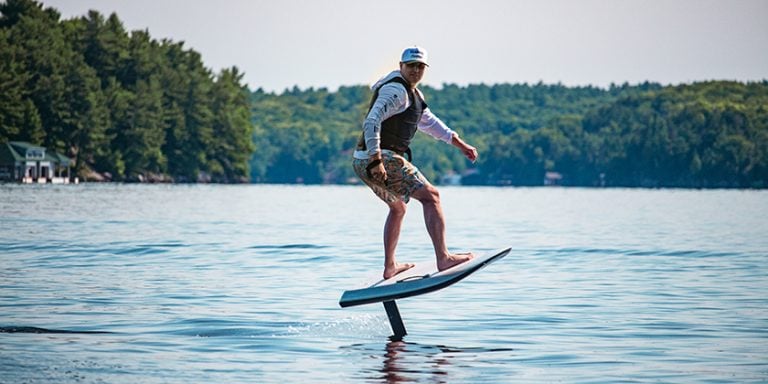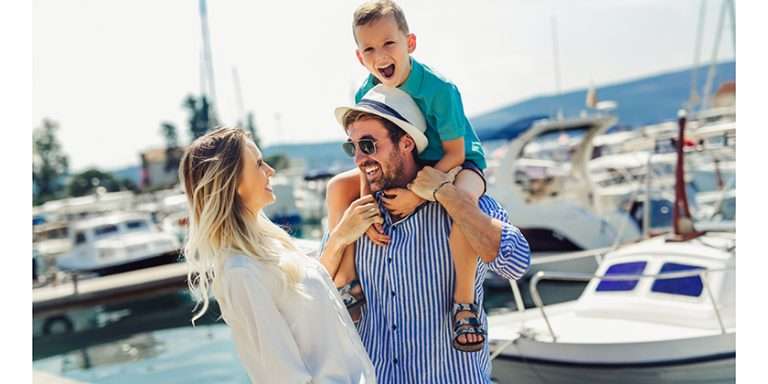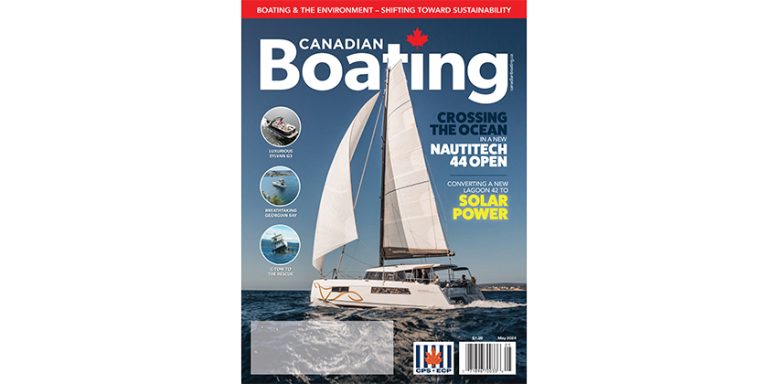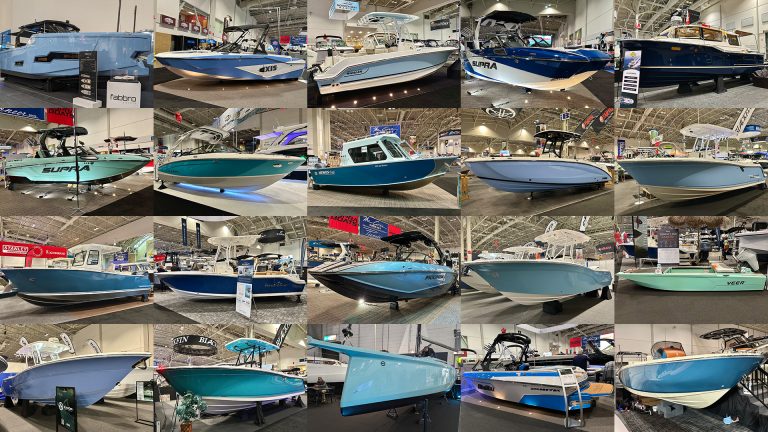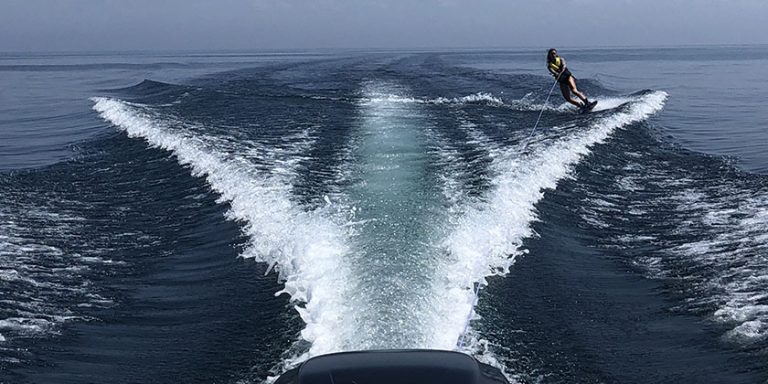Boating & The Environment: Shifting Towards Sustainability
May 1, 2024
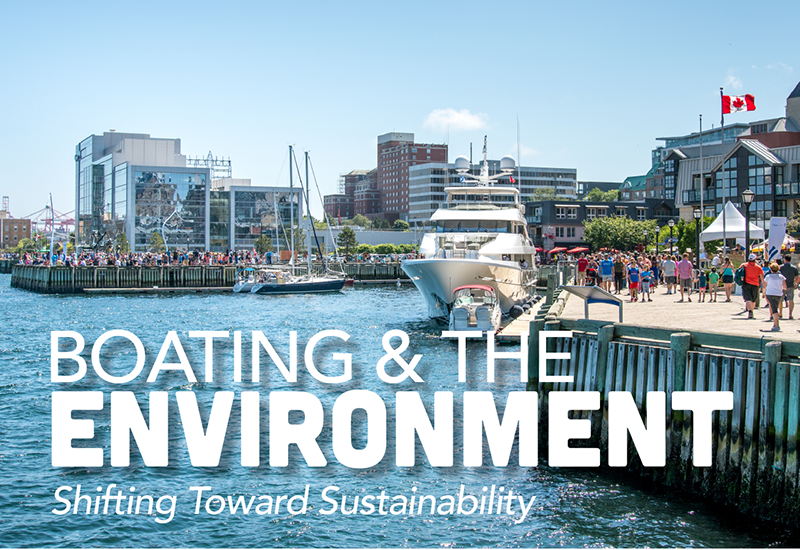
Credit: Build Nova Scotia
As boaters in Canada, we’re lucky enough to experience some of the world’s most exquisite waterways. Canada contains 7% of the world’s fresh water and has an estimated amount of over 2 million lakes. In fact, 9% of the country is covered in water and Canada is said to have the world’s longest coastline.
Living and boating in Canada, we’re lucky enough to experience this magic in our very own backyards.
Climate change has been apparent over many decades and even more so in the past few years. Our waterways have been noticeably impacted by plastic pollution, algae blooms, fluctuating water levels, warming lakes and oceans, lack of ice cover, erosion, sewage issues and more.
As boaters, we have a strong passion for the water. We are boaters because we love our water. We’re able to experience and see the water in a way that those of us on the shoreline can’t. It’s our responsibility to better and preserve the quality of our waterways for the generations to come.
RECENT RESEARCH
The International Trash Trap Network (ITTN) is a collaboration between two organizations: the University of Toronto Trash Team and Ocean Conservancy. Together, they’ve combined forces to create a network that’s increasing global plastic pollution cleanup efforts, performing data collection, education outreach and spreading awareness.
The ITTN recently completed their 2023 Annual Report and provided the most recent Canadian statistics. This Canadian data was collected from 27 different locations across the country from a variety of trash trapping-techniques and devices.
There were over 3.6 million pieces of macro debris collected and 44.6 million pieces of micro debris collected.
Out of the macro and micro debris, these are the top items found in Canadian waterways.
Top 5 Large Items:
1. Large Plastic Fragments
2. Large Plastic Film
3. Cigarette Butts
4. Plastic Bottle Caps
5. Large Plastic Foam
Top 5 Small Items:
1. Foam
2. Fragments
3. Other
4. Pellets
5. Film
Other items also significant to report include plastic food wrappers, cigar tips, paper/cardboard, miscellaneous plastic items and plastic straws/stirrers.
The Great Lakes Plastic Cleanup is another initiative that is actively removing plastics from our waterways. Since 2020, their findings show the top items collected are small fragments consisting of hard plastics, foam pieces and film pieces, along with cigarette butts.
It’s important to see these facts and to realize that this is just a small percentage compared to the bigger picture. These millions of pieces that were collected in Canada are just a mere handful of what’s out there.
But it’s not all bad news. Recently, our editor Andy Adams commented on the marine industry’s admirable environmental progress. Research conducted by the NMMA and the ICOMIA stated that the marine industry is a small contributor to greenhouse gas emissions compared to other sectors.
In a recent newsletter, NMMA Canada reported that since 2000, the marine industry has reduced engine emissions by 75-95% and improved fuel efficiency by 40%.
It’s clear that the industry is committed to reducing greenhouse gas emissions. There have been significant advances with electrification and more eco-friendly options all around, and it’s just getting started.
But that doesn’t mean we should wait around for more change to happen.
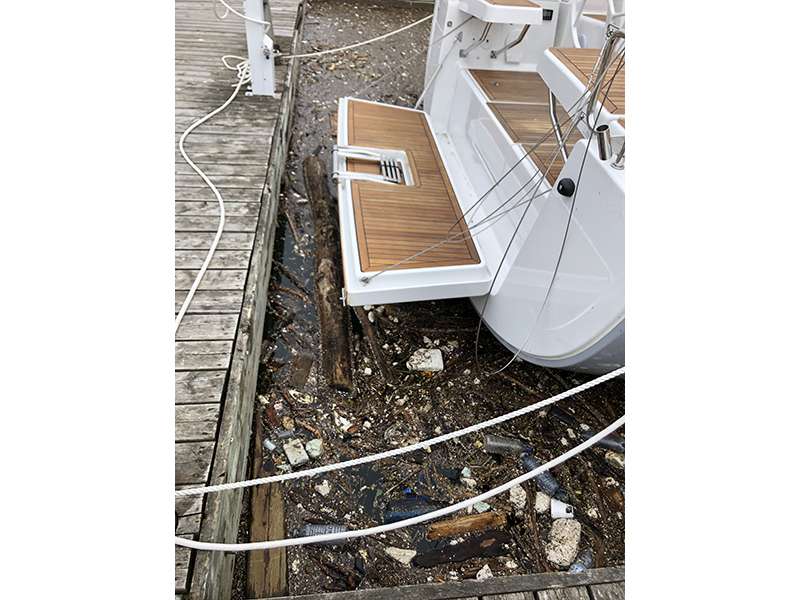
WHY SHOULD YOU CARE?
As boaters, we obviously love the water and I’d like to think that we do our very best to keep our waterways healthy. But the reality is that we’re experiencing climate change in so many ways and most of us are ignoring it.
Climate change and plastic pollution do affect us in the marine industry. Trash accumulation creates visual pollution and affects businesses. It produces unpleasant odours and health hazards often attracting bugs and pests. Increasing nutrient levels lead to green scum and hydrocarbons that discolour boat hulls. Lack of ice cover and higher water levels cause erosion to shorelines and damage to infrastructure like marinas and waterfronts. Invasive species are wiping out all of the fish we regularly go and catch every summer. Poor water health prevents us from safely going for a swim.
Swim Drink Canada, a national charity dedicated to connecting people to water, commented that some of their most recent findings have shown excess nutrients coming into the water causing eutrophic conditions where algae blooms grow out of proportion to anything they’ve seen in the past. Algae can clog intakes and boat motors posing a threat towards marinas and boats.
Hannah De Frond from the ITTN explains that plastic is “everywhere. It’s making its way into our food. It’s making its way into us. It affects everyone. So even if it feels like it’s not affecting you, plastic pollution has been found in every single ecosystem on earth.” Just because you can’t see it, doesn’t mean it’s not there.
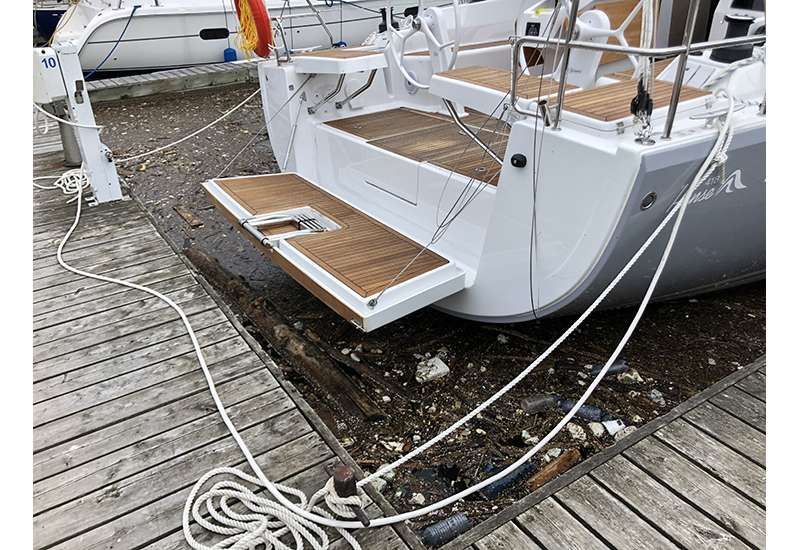
10 WAYS TO BECOME A SUSTAINABLE BOATER
Canadian Boating spoke with a number of individuals in the industry from researchers, non-profits, product specialists, sailors, powerboaters, marina owners, Blue Flag business operators and more. Here’s a list of the top 10 tips recommended in how to become a more environmentally friendly boater.
1. Dispose of waste responsibly. Don’t dump any type of litter into the water. Properly secure your waste onboard until it can be disposed of responsibly on land. Abide by a leave-no-trace mindset just as you would hiking or camping. Report overflowing garbage bins by the water when you see them. And as the saying goes, Reduce Reuse Recycle!
2. Maintain your vessel. This is a very important point, especially for the older vessels out there. But no matter how new your boat is, proper maintenance is key. Any type of leak can input hydrocarbons or other oils into the water which has serious impacts on the environment.
3. Minimize plastic usage. Avoid bringing single-use plastic items onto the water such as plastic bottles, bags and utensils. There are countless reusable alternatives to choose from.
4. Practice better fuel management. Slowing your wake. Easing up on the throttles. Avoid idling. Reducing as much gas and diesel as you can. Explore hybrid or electric options and consider E-gasoline rather than synthetic fuels.
5. Explore eco-friendly opportunities and alternatives. Examples of this could be hybrid or electric motors, sustainable product swaps, or consider solar panels, wind generators or water makers.
6. Properly maintain fishing gear & fish in accordance with local laws. Don’t take too many fish, especially fish that are out of season or that might be spawning. Avoid abandoning or losing fishing lines. They pose a significant hazard to marine life and contribute to plastic pollution. Lines are one of the most difficult pieces to recover and can remain in the water for 500 years or more.
7. Be vigilant. Boaters are the eyes on the water in a way that those of us on the shoreline aren’t. Be aware of environmental issues going on around you and act against them whether it’s reporting a problem or picking up a piece of trash in or near the water.
8. Support sustainable businesses. Engage with marinas or organizations that are certified with good practices such as Blue Flag. Encourage your own marina, yacht club, community or municipality to get more involved and to adopt better environmental practices.
9. Get involved & take action. Spread the word and talk about it within your local communities. Find groups and initiatives that are proactively addressing environmental issues like nonprofits, cleanups or other local events. Find like-minded individuals or businesses to work with. Recognize the collective responsibility that it takes to make the marine industry more environmentally friendly.
10. Embrace sustainability. It can be overwhelming knowing where to start. But you don’t have to do it all at once. Start with one small step and take it from there. Share what you’re doing. The more you share, the more people will care and follow your lead. Make sustainability fun. No matter how small, every action counts.
PRODUCT SWAPS
If you don’t know where to start, a great way to become more sustainable is swapping out some of your onboard products for more environmentally friendly options.
As boaters, we’re in direct contact with the water at all times. Many of the daily products we use onboard are filled with chemicals. It’s not a good mix.
Even if it’s starting with one sustainable product swap, every product matters. Here are a few ideas:
- Captain Phab: Eco-friendly marine products / www.captainphab.com
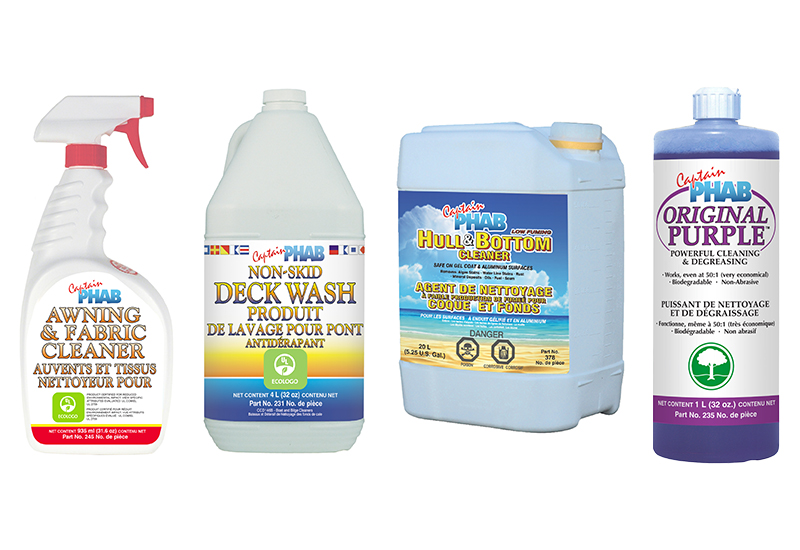
- Hempel: High Performance Marine Paint: Silic One (biocide-free silicon-based) & Hempaspeed (biocide-free hard acrylic based) / www.hempelyacht.com/en-us
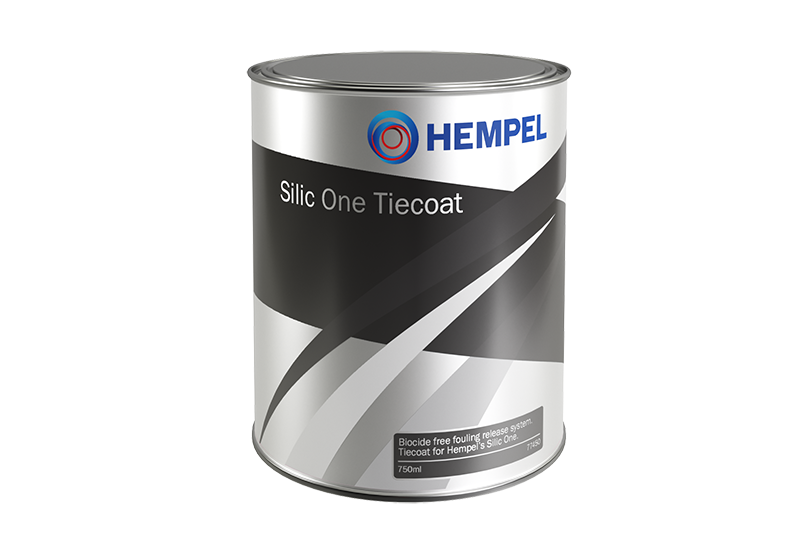
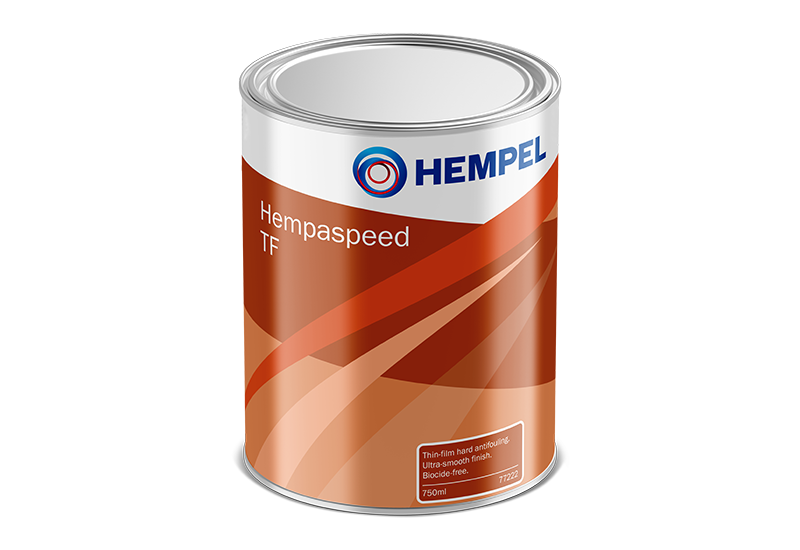
- Solar Panels: LightLeaf / www.lightleafsolar.com
- North Sails: NPL RENEW: Sailcloth constructed from more than 90% bio-based and recycled raw materials / www.northsails.com
- Mineral-Based Sunscreen: Sun Bum has reef-friendly options / www.sunbum-ca.com
- Everyday Item Swaps: Dish soap, hand soap, laundry detergent, shampoo / Items like these can even be found in your local grocery stores
- Filtrol 160: A washing machine microfilter / www.filtrol.net
Microplastics are infiltrating aquatic ecosystems at all levels. It’s been studied that 40% of microplastics in the water are a byproduct of washing your clothes. For those of us that have vessels with washing machines, it’s beneficial to install a microfilter to catch and prevent these tiny pieces from entering our waterways. Even if you don’t have a washing machine onboard, it’s beneficial to install a filter at home or at your cottage.
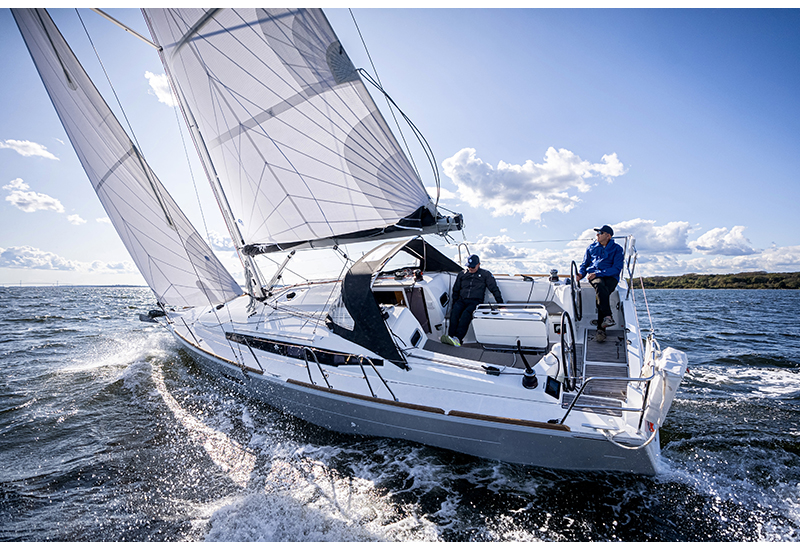
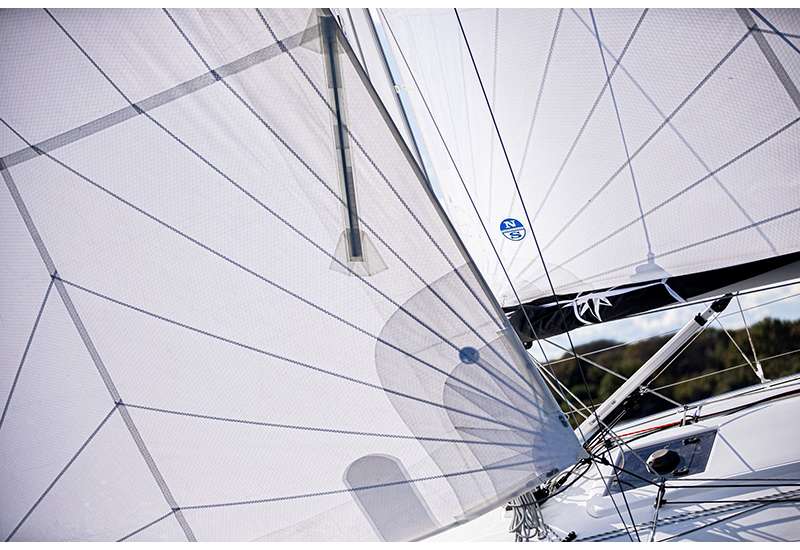
Sustainability is a huge focus for the North Sails group in 2024. Earlier this year, they launched NPL RENEW, their new sustainable sailcloth.
They also recently launched a sustainable partnership with Sea Bags to help divert retired sails from landfills to help the sailing community reduce waste.
Even though sailing has more environmentally friendly aspects, there are still ways the sailing industry can be more sustainable.
Beverley Cheng and Adam Brady Brown moved from their condo in downtown Toronto onto their 39’ Beneteau, Blu. When asked about their lifestyle changes from their move, Beverley comments, “I definitely think that when you live on a sailboat you’re much more aware of the waste that you create. You only have one garbage and then that garbage sits in your boat until you have a spot to throw it out. At home, you’re getting Amazon packages sent to you every day, you’re ordering your groceries, you’re buying whatever you want whenever you want it.”
We can all learn from individuals who live full-time on a boat. “Wanting so much less, wanting only what you need, and just taking exactly what you need. Not being so materialistic and reducing our ecological footprint as much as possible. The more sustainable you are on your boat, the less of an impact that you’re going to have on the environment.”
RESOURCES
It’s important for all individuals in the marine industry to adopt a more sustainable mindset. Whether you’re a powerboater, sailor, marina owner, or marine manufacturer, your role and actions play a significant part.
There are many resources out there with valuable information to help you get started adopting a more environmentally friendly lifestyle or business practice.
Blue Flag
The Blue Flag certification is the world’s most recognized international eco-certification for beaches and marinas. The Canadian operator for Blue Flag is Swim Drink Fish Canada. Blue Flag certified locations must meet specific criteria to receive the coveted certification. The first step is contacting Swim Drink Fish to express interest in the program and to set up a site audit.
As of April 2024, there are currently 9 marinas in Canada with a Blue Flag certification. When you compare these numbers to the rest of the country, it’s a stark contrast.
In Europe, it’s almost necessary to be a Blue Flag location (marina or beach). They have thousands of certified locations. You never have to worry about water quality.
It’s important for more Canadian locations to become Blue Flag certified.
The effort to go through the certification process is rewarding and gives you an advantage as a business/location. Click the link below for more information on how to get started to become Blue Flag certified whether you’re a marina, beach, harbourfront, municipality or just a member of the community.
Blue Flag
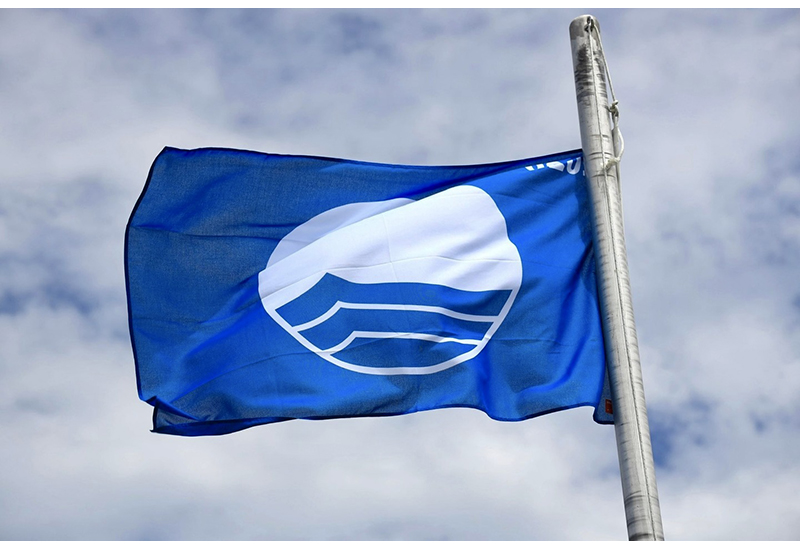
Swim Guide
The Swim Guide, by Swim Drink Fish Canada, is an online program with access to beach and water quality information in Canada and around the world. The Report Pollution feature is great for boaters. Whenever you see any type of pollution, you can report it through their website or app, and it will be shared with authorities for handling.
Swim Guide
Eco Certification Programs
Green Marine (nationwide) and Clean Marine (Ontario) are examples of environmental programs in Canada that marine businesses can become a part of. These programs help participants improve environmental performance beyond regulations and are easy and fundamental to be a part of. Click the links below to learn more about how you can become eco certified in your province.
Green Marine
Clean Marine
Trash Capture Devices
These technologies can be effectively used at marinas, yacht clubs and even in urban areas to help manage aquatic pollution. The Searial Cleaners by Poralu Marine include prevention and collection technologies. There are other devices on the market such as Seabin, LittaTrap, Gutter Bins, Trash Wheels, Litter Booms and more. Click the links below to learn more about technologies and which one would suit your location best.
Searial Cleaners
Great Lakes Cleanup Technologies
Mr. Trash Wheel started as a trash trapping technology in Baltimore’s waterfront which quickly turned into a pillar of the community. A trash wheel is a solar and water powered wheel with a ramp that collects trash. Even though its size is quite substantial, Baltimore’s Healthy Harbours Initiative turned the wheel into a character in hopes of a better response from the community. Residents of Baltimore absolutely loved the wheel, creating its own humorous account on X and some even got trash wheel tattoos! The city now has four wheels as of April, 2024 and each collects tons of trash every year.
For more information and resources on trash capture devices, you can also contact the International Trash Trap Network.
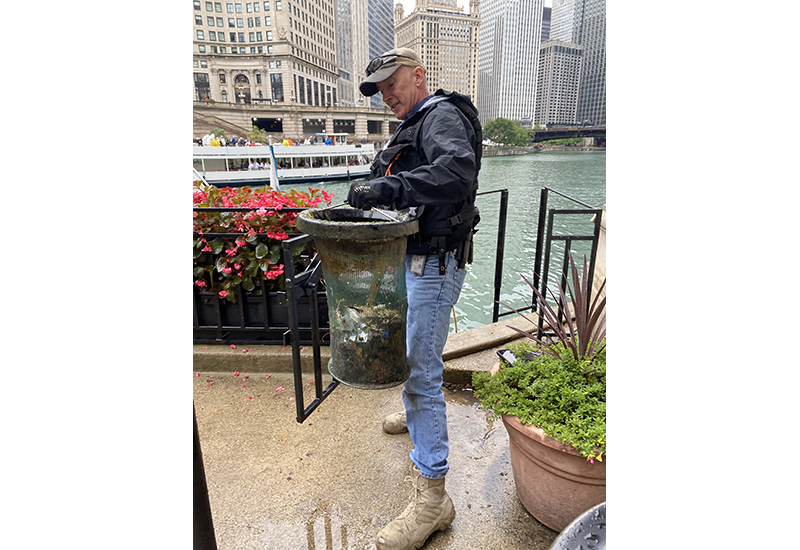
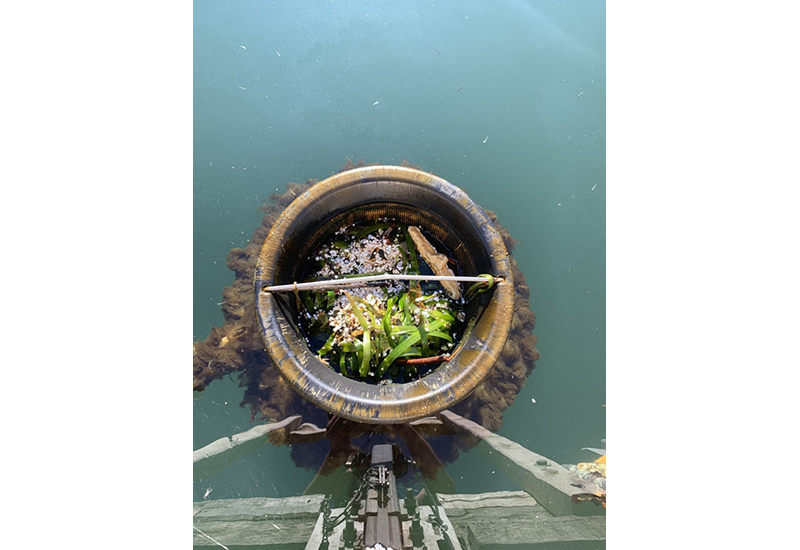
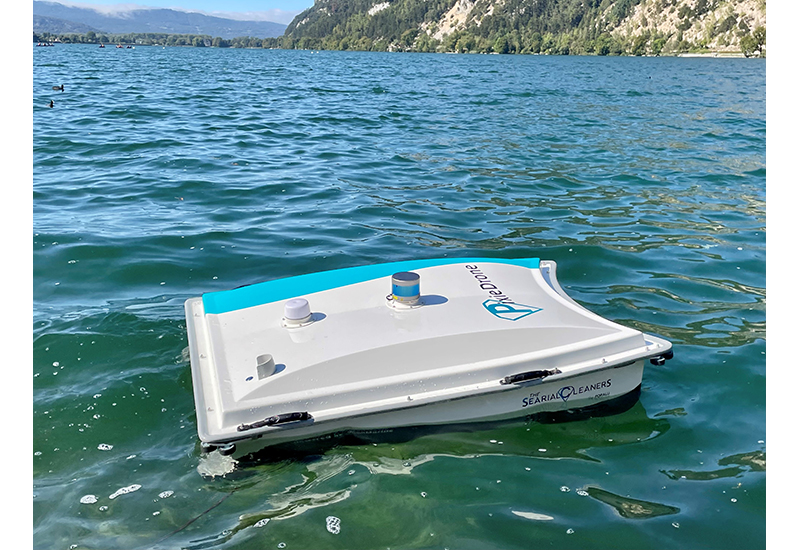
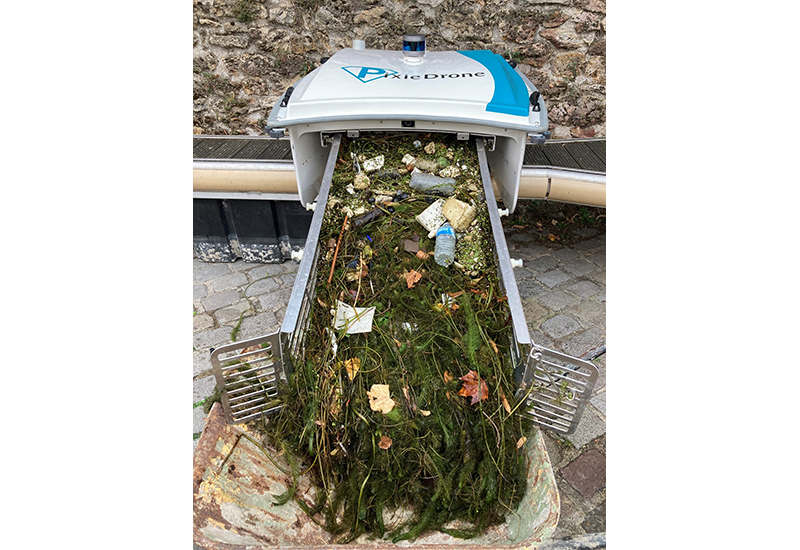
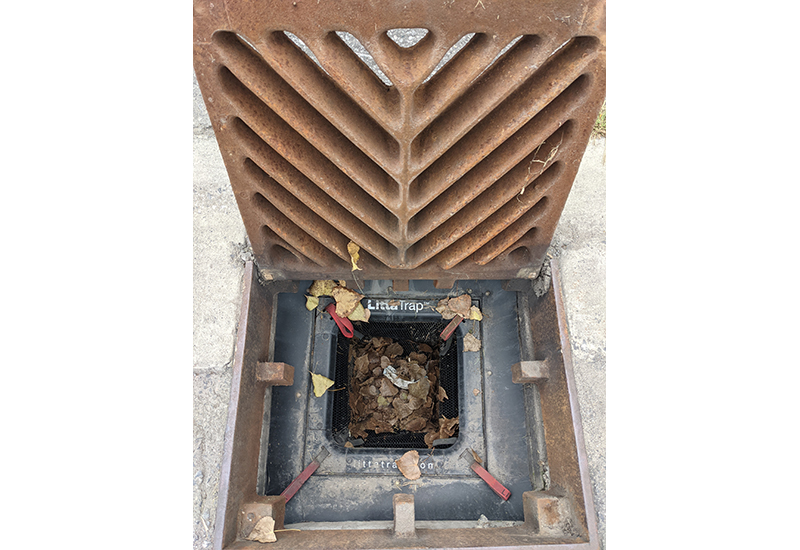
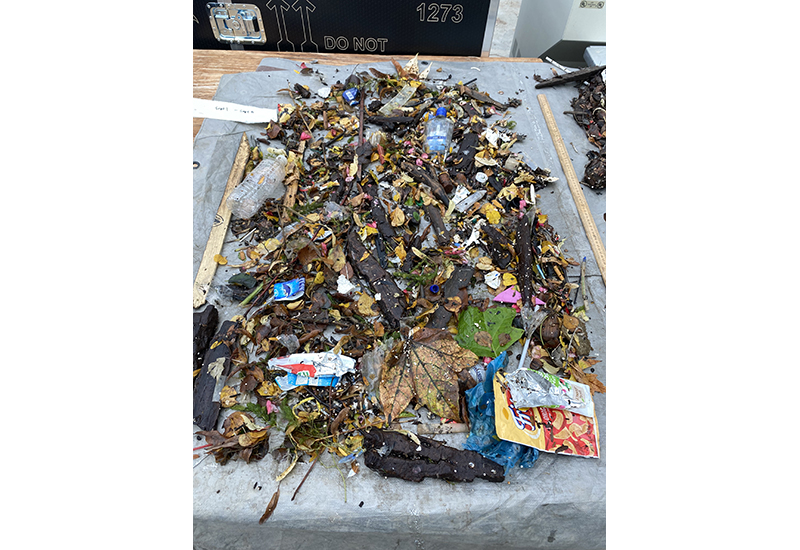
Images courtesy of ITTN and The Searial Cleaners
Clean, Drain, Dry
Implement this simple series of steps on your boat and marine gear to prevent the spread of invasive species. Invasive species spread alarmingly fast and threaten not only our aquatic life like the fish we catch but negatively impact aquatic habitats, drinking water and drainage infrastructure.
Each province and territory have different regulations and requirements. Remember: Clean, Drain, Dry: Every lake, every time.
canadainvasives.ca/programs/clean-drain-dry/
STOP WAITING, START DOING
People often think that making changes on an individual level is not going to make a difference, but in fact, it does. You can’t have the mindset of we’re just one marina, we’re just one boat, we’re not going to create change or make a difference. That statement is far from the truth.
I challenge you this Canadian boating season to change one thing a month about your boat or boating practices to a more sustainable option. After a whole season, you’ll be at least five times more environmentally friendly than you were before.
Small actions lead to big changes.


